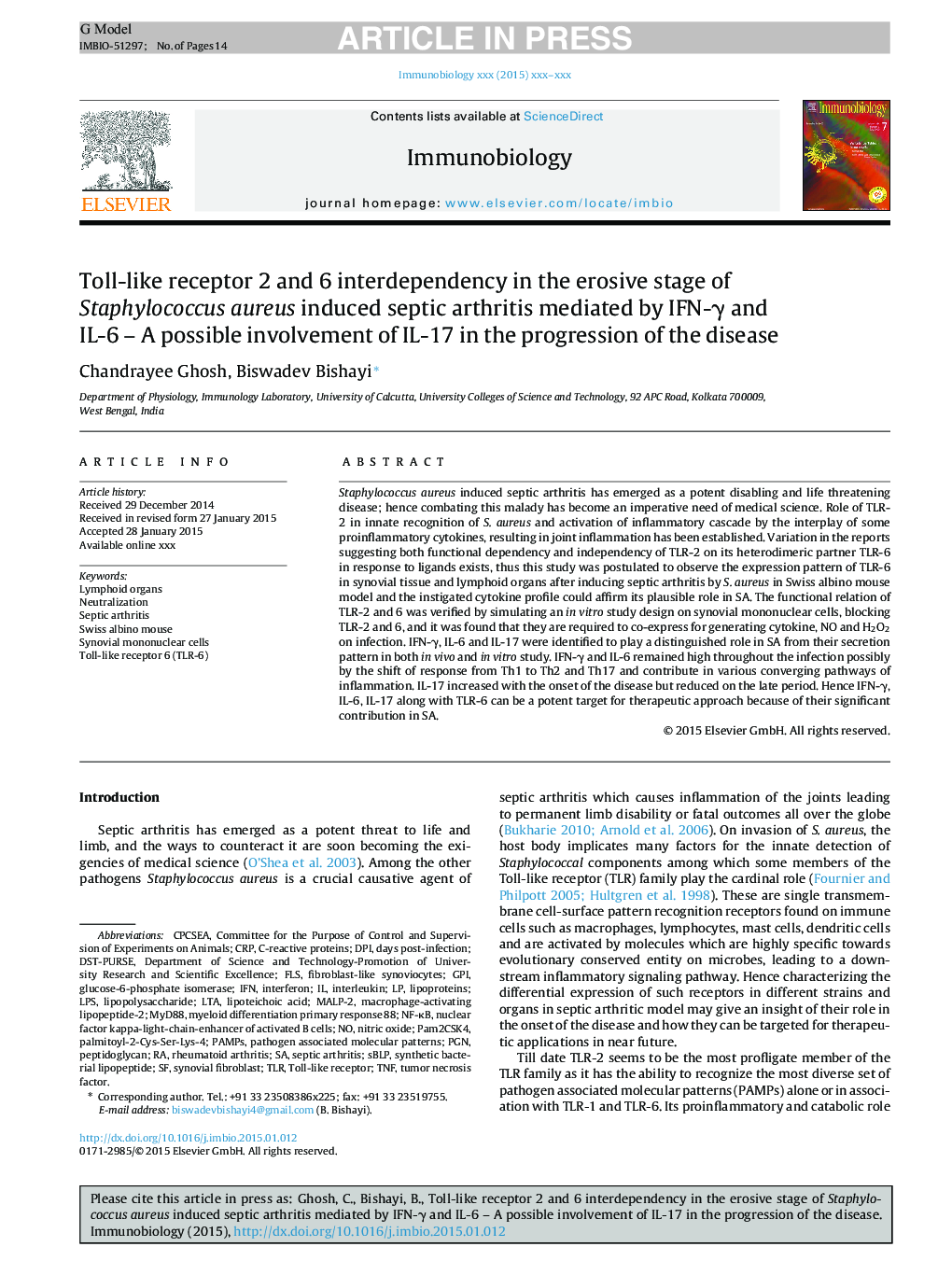| Article ID | Journal | Published Year | Pages | File Type |
|---|---|---|---|---|
| 10940825 | Immunobiology | 2015 | 14 Pages |
Abstract
Staphylococcus aureus induced septic arthritis has emerged as a potent disabling and life threatening disease; hence combating this malady has become an imperative need of medical science. Role of TLR-2 in innate recognition of S. aureus and activation of inflammatory cascade by the interplay of some proinflammatory cytokines, resulting in joint inflammation has been established. Variation in the reports suggesting both functional dependency and independency of TLR-2 on its heterodimeric partner TLR-6 in response to ligands exists, thus this study was postulated to observe the expression pattern of TLR-6 in synovial tissue and lymphoid organs after inducing septic arthritis by S. aureus in Swiss albino mouse model and the instigated cytokine profile could affirm its plausible role in SA. The functional relation of TLR-2 and 6 was verified by simulating an in vitro study design on synovial mononuclear cells, blocking TLR-2 and 6, and it was found that they are required to co-express for generating cytokine, NO and H2O2 on infection. IFN-γ, IL-6 and IL-17 were identified to play a distinguished role in SA from their secretion pattern in both in vivo and in vitro study. IFN-γ and IL-6 remained high throughout the infection possibly by the shift of response from Th1 to Th2 and Th17 and contribute in various converging pathways of inflammation. IL-17 increased with the onset of the disease but reduced on the late period. Hence IFN-γ, IL-6, IL-17 along with TLR-6 can be a potent target for therapeutic approach because of their significant contribution in SA.
Keywords
NF-κBTNFC-reactive proteinsPam2CSK4PGNCPCSEALTAGPiTLRFLSPAMPsDPIMYD88LPSMALP-2Septic arthritisRheumatoid arthritisLymphoid organslipoteichoic acidmyeloid differentiation primary response 88interferonIFNinterleukinToll-like receptorNeutralizationdays post-infectiontumor necrosis factornuclear factor kappa-light-chain-enhancer of activated B cellsSynovial fibroblastLipoproteinslipopolysaccharidefibroblast-like synoviocytesNitric oxidepathogen associated molecular patternsCRPPeptidoglycanCommittee for the Purpose of Control and Supervision of Experiments on AnimalsGlucose-6-phosphate isomerase
Related Topics
Life Sciences
Biochemistry, Genetics and Molecular Biology
Cell Biology
Authors
Chandrayee Ghosh, Biswadev Bishayi,
